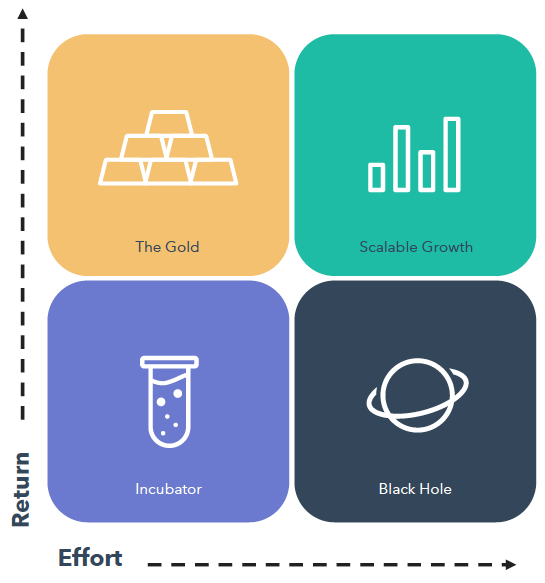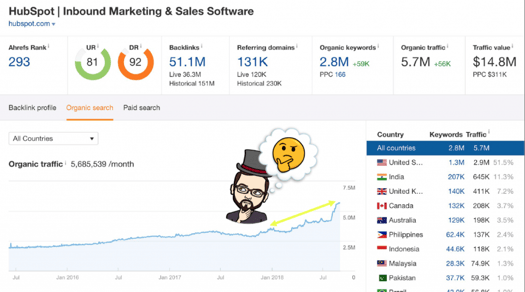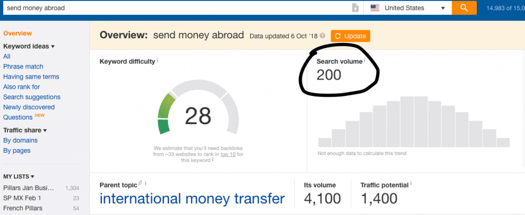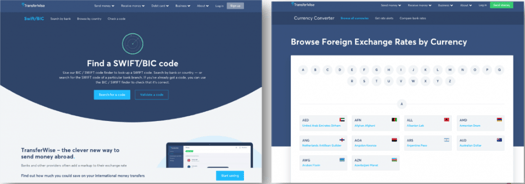What we cover in Episode 14
One of the hardest parts of scale-up growth is the need to keep growing demand for your products or services.
How do you allocate resources to the channels that drive existing growth, and the channels you need to drive future growth.
In this episode, we go deep into how to prioritize your acquisition efforts in a scale-up and show you some examples from leading SaaS companies.
You can find the previous parts here:
- Scale-up Part 1: Hiring for growth roles
- Scale-up Part 2: Setting up your team for success
How to Prioritize Acquisition Channels
1. The Prioritization 2*2 Matrix
Scale-ups are fun because you tend to have more resources and budget to invest in high growth opportunities. However, it can be challenging to know where best to invest those resources.
A simple prioritization matrix can help visualize where you're investing the majority of your team's energy.
For example, you can use a 2*2 matrix that looks at the amount of effort your spending in an area, and the amount of return you expect to get from that work.
The matrix would have four quadrants:

a. Scalable Growth:
Most of your growth for the next 6 to 12 months come from this quadrant. They're predictable. You know if you invest X you'll get back Y.
For example, if I double down on SEO, I know I'll see returns as I've already grown from that channel.
Scalable growth is the things you rely on to drive your current growth. It's high effort for high return.
b. Incubator
We talked a lot about the incubator stage in part two of this series on scale-up growth.
The incubator stage is the things you'll rely on for future growth, and you should start investing in them now.
For example, I should allocate X% of my resources to start testing out a referral model as I believe it could drive Y% of my future signups.
The incubator is what I'll depend on for future growth. It's low effort, low return.
c. Gold / Blackhole
The other quadrants in the 2*2 matrix speak for themselves.
The gold is the things we find that are low effort and high return. Cherise these things, they don't come around that often.
The black hole is the things that are a high effort, low return. You want to spend an as little amount of time as possible in here.
2. How to Find New Growth Levers in Existing Channels
Accelerating growth in existing channels is hard.
For example, HubSpot has gotten a lot of growth from Google. It turns out inbound marketing works great for this. Creating a lot of helpful content improves your search traffic.
But, what if we wanted to accelerate our growth, where would I start?
You would start by creating the right team to achieve the outcome you want. (we talked a lot about this in part two of the series). For this outcome, we would need a full stack search team.

That team would have everything they need to be successful in search, and wouldn't be reliant on anyone else for that success.
Having the right resources on a team means you can take on big experiments and projects to find new growth levers.
We know Google wants to become an answer engine and it’s a platform that’s always changing. Google's search team ran 200k experiments within 12 months with 1.2% of those changes resulting in a change to their algorithm.
Their goal is to provide users with one answer delivered through a featured snippet.
A featured snippet is an answer to a query that Google scrapes from a web page and shows within the search results.

A full stack team means we can experiment with how best to adapt our content to fit with how Google wants to deliver it to users.
For example, we ran a lot of experiments to figure out how best to format our content to appear in the feature snippets. We did a whole article here on what we learned.
We could also pull off significant initiatives like relaunching all of our websites in a topic/cluster model.
The upside of this is, Google wants to surface more content from websites that are authorities on topics vs. keywords. Clustering our content in this way shows Google we're an authority on those topics, helping us to gain a lot of extra search traffic. We did a whole article here on what we learned.
Accelerating growth in existing channels requires you to make a considerable investment in the team, allowing them to make big swings. The impact can be substantial :)

3. Double Down on Channels That Work
In a scale-up, once you've found a channel that returns predictable growth, your only question is how do you go faster?
One of my favorite examples comes from Canva.
Canva had grown a lot from both search and word of mouth.
In recent times they've invested a lot more in search, and it's generated huge returns.
Canva discovered a lot of people were looking for different types of image templates, so they built an entire template library that was available in their product, with over 50k available templates.
The smart part was, these were all indexable by Google so users could find them when searching Google for those templates.

That helped them to expand the number of keywords they ranked for, and it lead to significant increases in organic traffic.
Organic traffic increases weren't the only gains they saw from using templates. Templates also resulted in a significant increase in their user activation rate of up to 40%.
The great thing about templates is, they get people to the value of your product in a shorter amount of time, so there is often potential for them to both increase the number of users who sign up to your product, but also the number who activate on that product.
A double win!
4. Using Product for new Channel Growth
How can you use your product to find new growth opportunities? You've probably heard a lot about product-lead growth, well, here are some examples.
a. TransferWise
Transferwise is an excellent online service that lets you send money abroad. The challenge for Transferwise's growth is very few people are searching for that service online.

So, they did what any excellent growth team would do; they molded their product to better fit with a channel, in this case, Google.
They built a full stack search team and began making products based on what people were searching for, and were relevant enough to their core product that they could monetize those users.
For example, they build a directory that allowed people to search for their banks swift/bic code and a whole website that listed every exchange rate by currency.

Both of these things, like Canvas template library, dramatically increased the size of Transferwises search footprint adding millions of new pages to Google's index.
It allowed them to start generating a lot of net new growth from search.
b. Lyft
Another excellent example of a company leveraging their product to build out a new channel comes from Lyft.
Lyft created a referral program called 'Free with Friends.' It got people talking about the app by providing free rides for friends who were sharing a taxi with a Lyft user.
If I'm a Lyft user and my friend isn't, our taxi ride was free if my friend signed up, added their credit card details and activated a coupon I gave them.
A smart way to get people using the app for the first time via a referral.
The podcast provides a more in-depth look at these topics, so if you enjoyed reading the above, please do give it a listen.
And until next time,
Happy Growing!
Subscribe Rate and Review
>> Stitcher
>> Google Play
>> Spotify
Follow us on Social Media
>> @Searchbrat
>> @SJTousley
Topics: Podcast, Swipefile, Customer Acquisition
